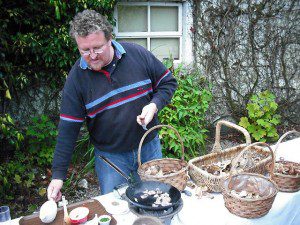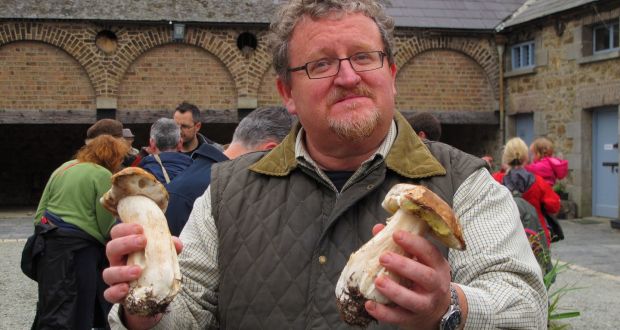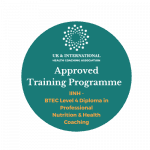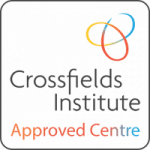You describe yourself as a “dedicated mycophagist” (one who likes to gather and eat mushrooms). When did you first become interested in mushrooms and foraging?
Growing up as a kid in Galway my parents would bring us to fields (usually full of sheep) to find mushrooms. It wasn’t unusual in those days to pick wild mushrooms and kids would then sell them at the roadside to passing motorists.
We had a culture of mushroom picking in Ireland back then but not so much anymore. Eastern European kids still do it and they often pick and eat forest mushrooms.
The more I learn about mushrooms, the more I realise just how incredible they are. There’s very little in life that is untouched by fungi. There are 1,600km of fungal micronised roots in one square metre of soil. Worms feed on it. Soil is alive because of it.
There’s a symbiotic relationship between trees and plants and an exchange with the fungal network underground. The trees exchange sugar with fungi and get minerals back in return.
Fungus in the soil makes plants grow much faster and bigger. You can inoculate seeds with fungus and add it to your soil. If you do this with tomato plants it helps their resistance and the plants grow much quicker.
Bees depend on mushrooms for their resistance to diseases. There is evidence of a link between bees dying and the use of anti-fungal sprays on crops. The mushrooms are killed and the bees’ immune systems are compromised as a result.
What is your educational background?
I studied fungi at UCD with a Professor of Mycology. I have also attended several workshops and mushroom gatherings in Ireland and the US.
You do foraging walks in Ireland. Tell us a bit about those.
I will be holding 2 mushroom hunts at Kilruddery House in October. They are full-day events. We start off with tea and coffee and scones. I do a 1-hour talk about mushrooms, covering identification, edibility, toxic mushrooms and “fascinating facts”, among other topics. I give everyone visual aids and we go off searching for mushrooms. We have a mushroom identification workshop afterwards. We usually use a panel of experts and find about 50 varieties of mushrooms.
Any fascinating facts about mushrooms to share here?
Mushrooms pre-date all plants and animals on this planet. Healthy plants are covered in fungi, like an apple on a tree. Mushrooms contain selenium, which is often hard for us to get enough of. Selenium has vital antioxidant properties, which prevent the cells from damage. Mushrooms are also high in other minerals and trace elements.

Do you team up with any chefs?
Yes, I like to include a cooking demonstration element to the foraging events. I’ve teamed up with people like JP McMahon and Richard Corrigan. I’ve also worked with Pat McLarnon, the chef from Brook’s Hotel, at Kilruddery, and the late Paolo Tullio. There may be something in the pipeline with Marco Pierre White.
You also go further afield in your quest for mushrooms.
Eastern European countries have a strong culture of mushroom picking. I’m bringing 12 people on a weekend trip to Lithuania in September, where we will be visiting the Varnea mushroom festival. There is also a beer festival, where we will sample some very tasty natural beers. It’s is a great way to experience a real celebration of mushrooms and a chance to try traditional dishes. I often have repeat customers on these trips.
What are the benefits of foraging?
Finding your own food makes a lot of sense. One great thing about foraging is that it increases the diversity of your diet by broadening the range of foods you eat. Our diets are quite narrow and we eat so much processed food nowadays, whereas in olden times people ate hundreds of different things and were exposed to hundreds of different flavours. Foraged food can taste quite bitter at first but you soon get used to the taste.
Another great benefit is knowing that the food you are eating is clean. So much of the food we eat nowadays is full of preservatives and covered with sprays which kill the fungi, which are essential to your health. It’s great to eat what your body wants as opposed to what supermarkets are dictating.
Getting close to nature is also a great benefit. You can’t beat getting out into the countryside and interacting with nature. Getting food at the same time makes it a win-win.
Do mushrooms have medicinal properties?
Absolutely. Mushrooms have anti-viral properties. We swear by a drink made with mushrooms in our house whenever anyone has a cold. While antibiotics are no use for treating viruses, mushrooms can be useful.
Some species of mushroom are dangerous and can be potentially fatal. How do you make sure you identify them correctly?
Well, there’s only one sure way to find out if a mushroom is poisonous – eat it! There are 6 or 7 potentially fatal poisonous mushroom varieties in Ireland and you can find them anywhere you find edible mushrooms in the wild. There are at least 20 mushroom-related poisonings a year here, with effects ranging from mild stomach upsets to liver transplants, life-long dialysis and even death,
When it comes to identification the best thing is to get expert guidance, because there’s no simple rule. Simply looking up a mushroom in a book is often not enough as pictures can be misleading. You would really need to look at the spores under a microscope to be sure.
At a California Mushroom Hunt experts used genetic sequencing to identify the mushrooms found and the results showed that 50% of the mushrooms found had actually been misidentified.
I have to ask – what can you tell us about mushrooms of the “magic” variety?
I have a respectful attitude towards magic mushrooms and believe that they are not something to be taken lightly. They have been used in religious rituals for thousands of years. They have also been claimed to be effective in treating depression but, as they are banned substances in every country, studies of this are illegal.
As psychoactive drugs, they can have very serious effects, especially for vulnerable people, ranging from poisoning to long-term mental impairment or even death.
Do you forage for any other foods besides mushrooms?
I also go foraging for sea spinach and seaweed. Alexander (black lovage) seeds are good to use as pepper. Elderflower, meadowsweet and berries are also great. I enjoy cooking and I love using foraged foods in my own cooking.
Where are the best places to go mushroom foraging in Ireland?
Kilruddery, Powerscourt, Malahide Castle, Avondale, Druid’s Glen and Phoenix Park are all good spots. Look for woodlands, especially old ones that are non-managed and not sprayed. You can usually tell whether an area is sprayed or not by looking at the diversity of plants.
You make your own “Organic Turkeytail Mushroom Supplements”. How did this come about and what benefits do they have?
Someone contacted me to ask if they could hire me for the day to search for Turkey tail mushrooms. Turkey tail is used to make a truly powerful supplement popular in Asian countries. It has been used in China since the 15th Century. In Japan, it has been used since the 1980s as a standard part of cancer treatment there. It also has anti-viral properties and is used to prevent cancer, too.
Turkey tails are seasonal so you can’t always be certain to find them. The process of getting the nutrients out is tricky. If you eat them as such they go through you and you lose the nutrients. They need to be boiled for over an hour to make them bio-available. People were looking for ways to get them year round. By grinding them up when dry you can break the cell wall and make them bio-available so I decided to develop a turkey tail supplement. This is made from organic turkey tail mushrooms, which have been micronized to make them bio-available.

You also sell truffle inoculated hazel saplings. Tell us a bit about those.
Truffles are highly prized among foodies, but people tend to either love or hate them. They taste like a cross between garlic and mushrooms. You grate them finely over a dish and they are often used with pasta dishes.
We teamed up with leading botanists to provide saplings inoculated with indigenous Irish truffles. They are produced without contamination to ensure success in a shorter time, with higher yield and reliability. People can expect to see truffles in about three to four years from planting and of course, they also get hazelnuts.
What is your food and nutrition philosophy?
Eating can be a great pleasure and it’s hard to beat eating in good company. Food and how we use it is the key to being happier and healthier.
The growth of the fast food culture, with people coming up with flavours in labs, means we really lose out on a lot. It doesn’t suit commercial interests to have people growing or sourcing their own food.
What’s next on the agenda for you?
I’d like to keep exploring the world of mushrooms. It’s a fascinating subject and I get to meet a lot of very nice people who are in tune with nature and good food. I’d love to expand the turkey tail business. I’m looking at exporting to Asia at the moment so it would be great to see how much it could grow.
BILL O’DEA
Mushroom Forager
Mobile: (086) 827 4899
Web: www.mushroomstuff.com












